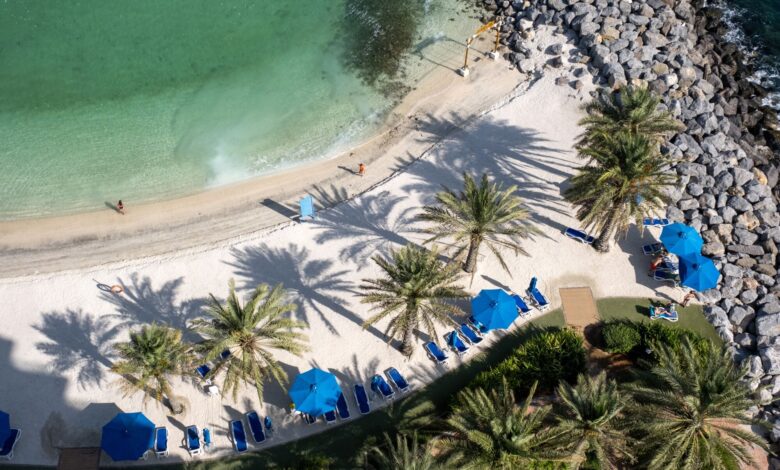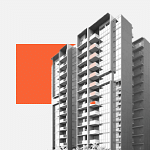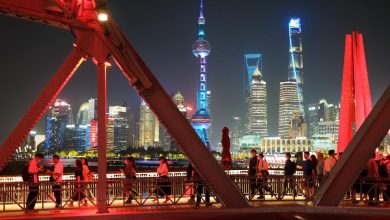The first casino near Dubai sparks a new gold rush

BARELY a year after Las Vegas casino operator Wynn Resorts announced plans for a US$4 billion resort in the United Arab Emirates, the area is crawling with construction workers erecting five-star resorts, shops and US$7 million villas in what developers expect will become a major tourist hotspot.
Before that deal, the artificial Marjan islands off the emirate of Ras Al Khaimah, or RAK, had spent most of the past decade as a lost opportunity, a 2.7 square-kilometre white elephant largely unused after a US$1 billion football-themed resort and related Real Madrid academy was scrapped for the site.
These days, every lot is sold and cranes are rising faster than the morning desert heat. Hoardings around construction sites are plastered with signs advertising the coming homes. At least 20 developers have projects in various stages of design and construction on the islands, said Abdulla Al Abdouli, chief executive officer of the state entity that developed them. He expects most projects to be completed within just six years.
The new construction will cost billions of US dollars, he said. But even he’s not sure exactly how many.
Anticipating the rush of new visitors, the emirate’s small international airport is planning to build a new terminal to boost capacity to two million passengers a year by 2027, almost triple the some 700,000 travellers anticipated this year. About one-third of the world’s population lives within a four-hour flight.
Ras Al Khaimah, which means the head of the tent in Arabic, has a 40-mile coastline on the Persian Gulf and until now has largely catered to Russian tourists looking for a cheaper alternative to Dubai. The Marjan islands, roughly half the size of Dubai’s famous Palm Jumeirah, were completed in 2013.
A NEWSLETTER FOR YOU

Property Insights
Get an exclusive analysis of real estate and property news in Singapore and beyond.
On the island where Wynn is building its planned casino and resort, activity is going full speed. A dozen cranes hover over what’s to be among the company’s largest developments, at 1,500 rooms. Access to the island is restricted only to workers until the site opens to the public in 2027.
“The Wynn casino and resort has been a game changer for Marjan,” said Khalid Bin Kalban, the CEO of Dubai Investments, which is building a hotel and a residential community there. “Everyone is there in anticipation that RAK’s tourism will grow rapidly with the casino. It’s about the gaming, the shows, the hotels. You are essentially bringing a mini-Vegas to Ras Al Khaimah.”
The introduction of casinos would be a step change for the UAE, where gambling is prohibited under Islam and is illegal in the country: Offenders can be fined or sentenced to two years in prison – or both. No casinos exist in the six Gulf Cooperation Council countries, although they can be found in Lebanon and Egypt. The UAE has created an authority to provide a framework for legalised gaming, although no laws legalising it have been passed so far.
It took decades to make Las Vegas what it is today, but officials here are thinking more ambitiously.
Marjan, the owner of the islands, is looking to build about 9,000 hotel rooms and a similar number of homes to add to the existing properties. The islands currently host six hotels with a total of 3,052 rooms along with around 3,000 apartments, many of which are serviced, including JW Marriott and Rixos. Las Vegas has almost 155,000 hotel rooms; some 10 per cent of that total will exist here within a generation.
But for the emirate, which welcomed 1.2 million visitors last year, the existing supply sharply lags demand, said Al Abdouli, the CEO of Marjan. With about 8,000 rooms, the opportunity for developers is there to grow the market and attract new visitors, he added.
“Marjan Island is different from the daily hustle and bustle of being in downtown Dubai or Abu Dhabi,” said Al Abdouli. “It’s a getaway. Many of the visitors come from other parts of the UAE for staycations. There are mountainous areas for hiking, biking, triathlons and beaches. But the Wynn resort will be a catalyst like no other in the UAE.”
Prices have exploded, and for the lucky few who bought early the returns have been spectacular. Bin Kalban said prices per square foot not long ago were 300 dirhams (S$110), but now you can’t find anything below 800 dirhams.
At the moment Ras Al Khaimah has 12 hotels in the planning stage along with seven in construction, according to CoStar, a London-based provider of real estate data and analytics.
The broader emirate of Ras Al Khaimah today has an old Arabia vibe, mainly a vast expanse of red sand dunes with sparse vegetation. It’s a far cry from Dubai’s skyscrapers and traffic jams some 70 miles down the road.
In the race to develop tourism destinations, Ras Al Khaimah has an advantage over Saudi Arabia. Alcohol is legal, and scores of Russian and Chinese tourists already visit the emirate, despite the limited number of hotels. The casino will help attract gamblers but will also lure families looking for a slice of Vegas in the desert – without the trans-Atlantic flight.
Still, for Ras Al Khaimah to become a sustainable destination, more investment is needed in the area’s infrastructure, along with restaurants and retail, to support a steady stream of visitors.
“There’s a plethora of different things that are required,” said Philip Barnes, chief executive officer of Abu Dhabi-based Rotana Hotels & Resorts. “That’s why I think when people are looking at tourism or hotels, you have got to look at big picture. Where do you want to be and where do you have the infrastructure? It’s great to get into a destination that is developing because it allows you to get a foothold. But you have got to be cognizant of the development” of facilities and supporting infrastructure, he added.
There are no public transport options, for example, to visit the Marjan islands from Dubai.
“Las Vegas, contrary to what most people think, is not about gambling, it’s about conventions,” he said. “The Sphere, this new concert arena that they have opened, drives traffic into that city because they bring big names in with big impact on the economy. It’s not just about the people coming in for the concert, it’s the hotels, it’s the restaurants, it’s the retail. When you’re looking at tourism as a whole you have to understand the whole picture.”
Even without that, developers are racing to complete the property as soon as they can. A typical four-bed villa on the island costs 6 million dirhams (S$1.6 million), while top-end luxury houses here can reach 40 million.
Emaar Properties, developer of the world’s tallest tower in Dubai, is building luxury apartments and townhouses, with its marketing touting its site near the upcoming casino. The Address Residences, starting at 1.8 million dirhams, will include apartments ranging from one to four bedrooms and the community will include gyms, pools and restaurants on the island’s sandy white beaches.
Abu Dhabi’s largest developer tied up with the international luxury beach club, Nikki Beach, to develop three branded residential buildings, and the first batch of 570 homes was sold within hours amid strong demand from overseas and expatriate residents. Another development, Rosso Bay Residences, has also been sold in an emirate that’s trying to lure the wealthy with various plans.
Abu Dhabi National Hotels last year started building a 1,000-room luxury resort on one million square feet of land that’s set to be completed next year. A US-based private developer, WOW Properties, has broken ground on 474 homes to be serviced by JW Marriott, along with a 264-room hotel at a total cost of 4.8 billion dirhams. And Britain’s Aston Martin has partnered with Saudi Arabian developer Dar Global to design the interiors of luxury homes that are part of a US$250 million beachfront residential community to be completed by 2028.
The momentum of so many developers building at once is going to “create more and more synergies”, Bhupender Patel, co-CEO of WOW Resorts, said. “The whole market’s about to take off like you’ve never seen a market take off in this part of the world.” BLOOMBERG





